Vernonia noveboracensis, New York ironweed brings a spectacular display of fluffy deep red/purple flowers in late summer, early fall. It is a tall native perennial herbaceous plant blooming late summer to early fall.
Flowers
We were thrilled by a large stand these amazing flowers along a road in High Point State Park, NJ.
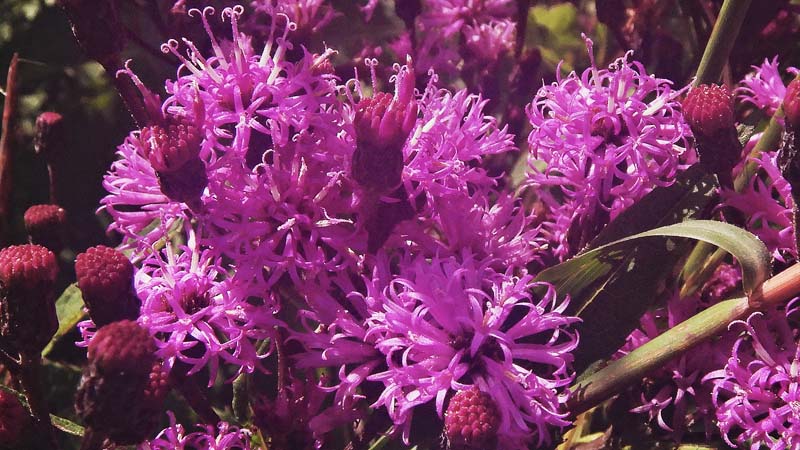
Inflorescence, flower cluster, flowerhead, and florets
Vernonia noveboracensis, New York ironweed is a member of the Daisy/Composite family (Asteraceae/ Compositae). It is also known as the aster or sunflower family. What we usually call a single flower is actually the inflorescence, flower cluster. The flower is a composite, made up of many tiny flowers. These multiple tiny stalkless flowers are attached to a receptacle/disc. The inflorescence is also called a flowerhead or capitulum. The individual flowers are called florets. There are two kinds of florets: ray and disc. The ray florets are around the edge of the flowerhead and have the large showy petals. The disc florets are in the center of the flowerhead. New York ironweed has only disc florets. The florets are bisexual (have both male and female parts).
New York ironweed, even without showy petals, brings us a cheery bright bouquet of red/purple disc florets. The flowerhead is about half inch across with 20-40 disc florets. Pollen is white. NY ironweed offers pollen and nectar to pollinators. Primary pollinators are butterflies and bees.
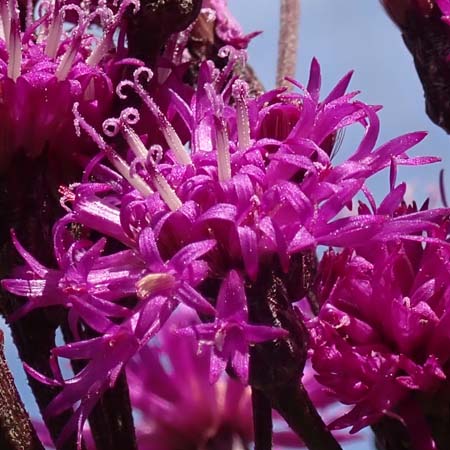
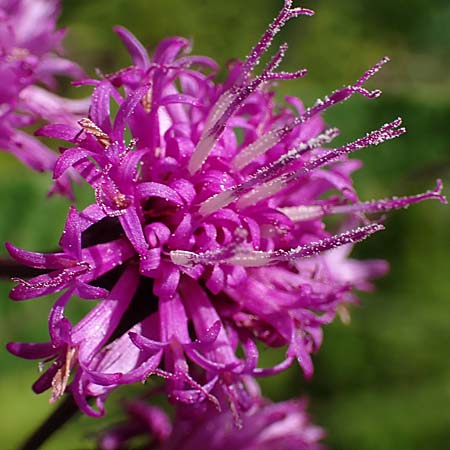
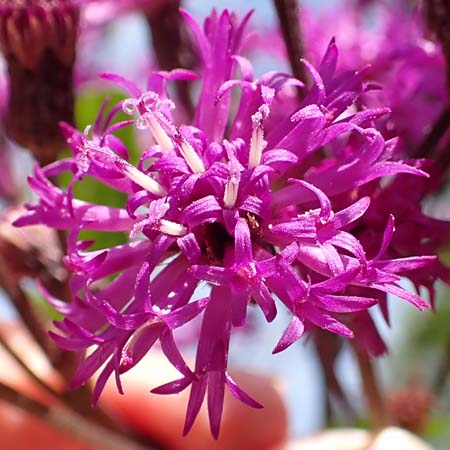
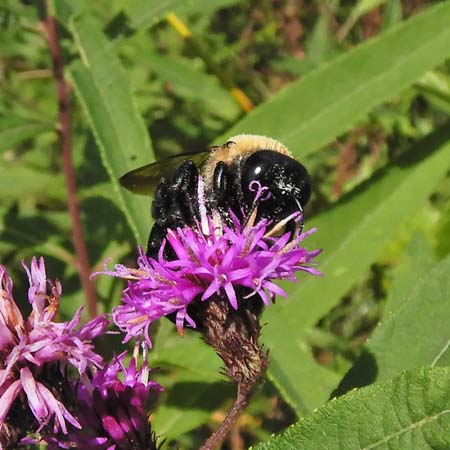
Stamens & Pistils: Refering to the 2 photos below:
- The magenta floret corolla is tubular (ct) and opens up to 5 lobes (cl).
- There are 5 stamens with filaments (fl) that are free and separate. However, the anthers (an) are fused forming a whitish hollow cylinder. The ridges on the anther can easily be seen.
- The pistil style(st) and stigma(sa) start off inside the fused anther cylinder(an). The stigma is bilobed (sa).
- Pollen presentation: The anthers release their pollen into the inside of the cylinder ( introrse dehiscence). When the style and stigma grow, they push the pollen from inside of the anther cylinder to the outside so that it can be picked up by insects for pollination. The style and stigma continue to grow beyond the anther cylinder. This is secondary pollen presentation. To discourage self pollination, the stigmatic surface is not exposed/receptive till some time after pollen has been released (protandrous).
- For more on this secondary pollen presentation with composites see Wingstem flowers (information and images of dissected florets) and references below.
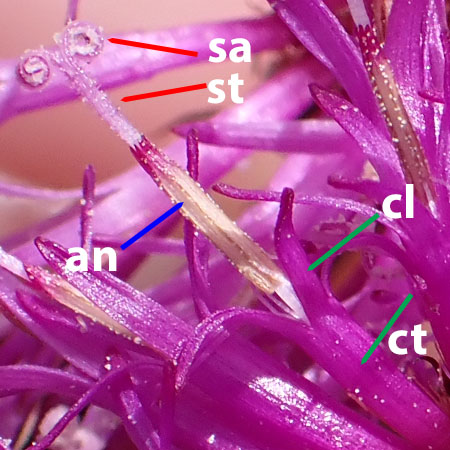
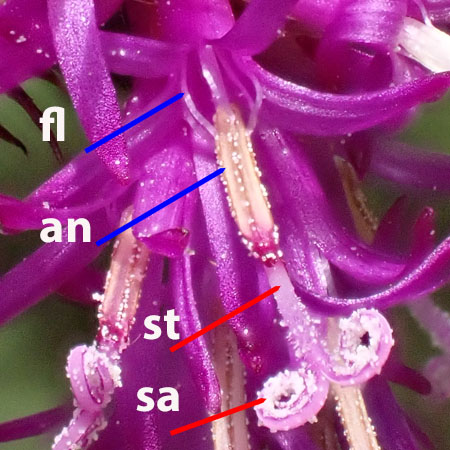
The corolla lobes open and reflex. All the florets in a flowerhead do not mature at the same time. Note also the reddish brown pappus (bristle/hairlike structures). The pappus here is the calyx (sepals) and is attached just below the corolla above the ovary. It will be part of the mature fruit.
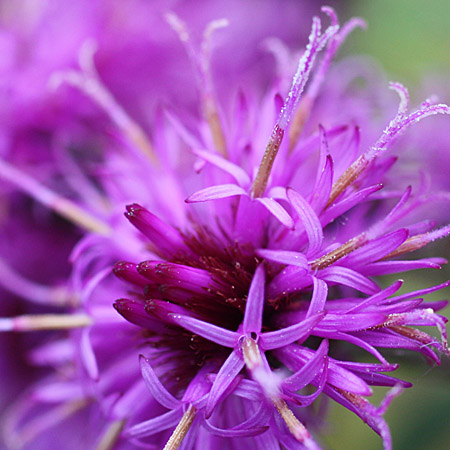
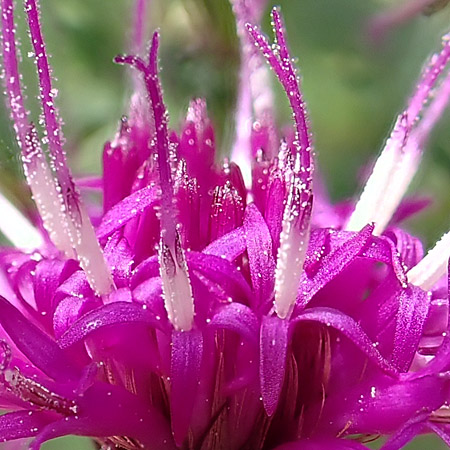
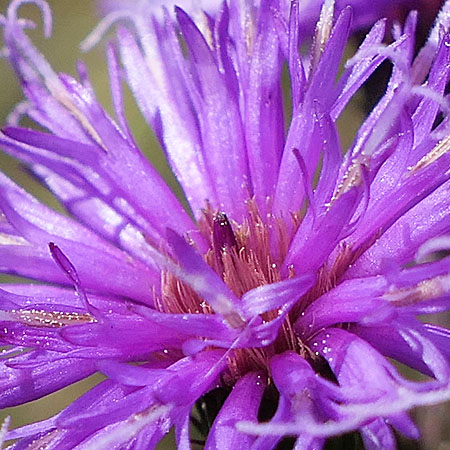
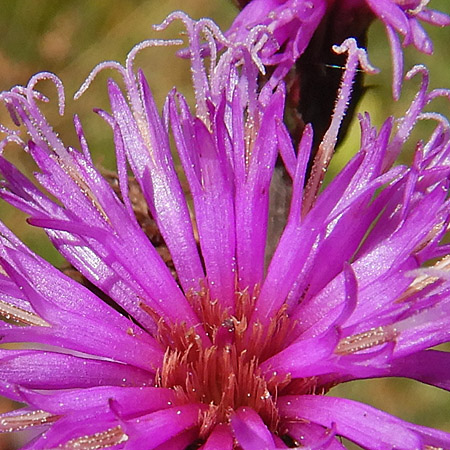
At the bottom part of a flower head is a cup shaped structure called - involucre. It is made up of bracts called phyllaries. Bracts are modified leaf like structures. The long phyllaries are narrow and sharp at the end. Seen also are flower buds with some that have matured. Pappus is also apparent.
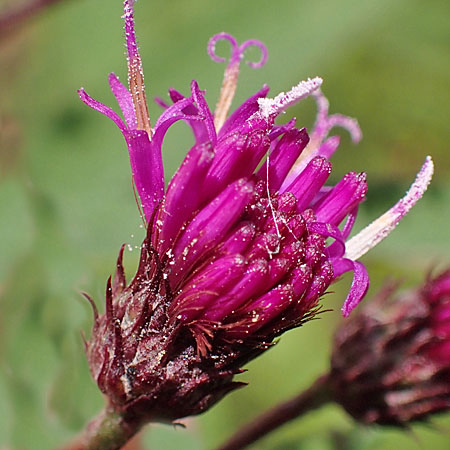
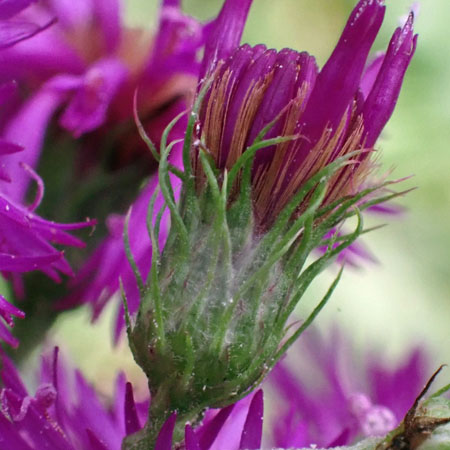
These flowers with anthers and stigmas are not apparent.
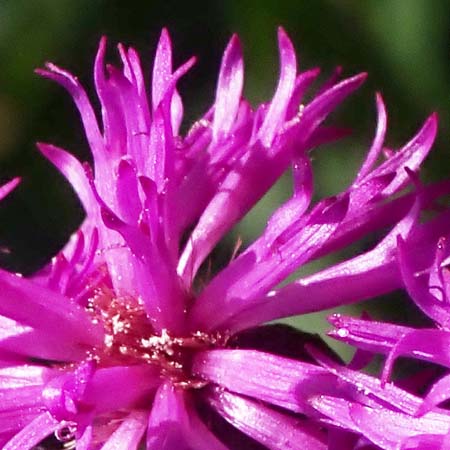
Close up of the stigma, style, and fused anther cylinder: Note the hairs on the style that continue on to the outer surfaces of the stigma. The inner surfaces of the stigma are active/fertile.
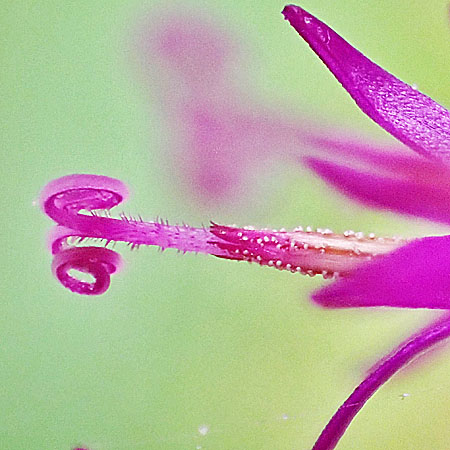
Fruit
Fruit
After a while the flowers die and the florets shrivel up. After the dried-up florets fall off, what is left to see is the pappus of the florets. The pappus will be part of the mature fruits. Inside the involucre, the ovaries are maturing into seed. I am hoping to get photos of the seeds. The seeds are dispersed by wind.
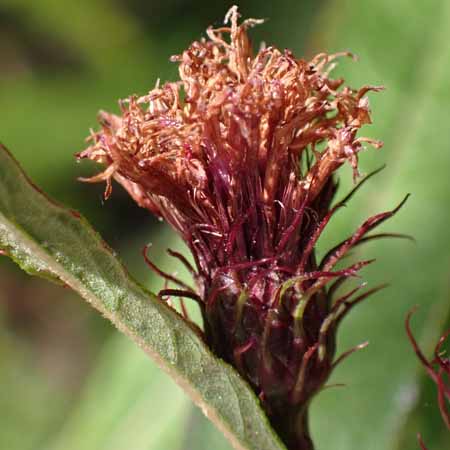
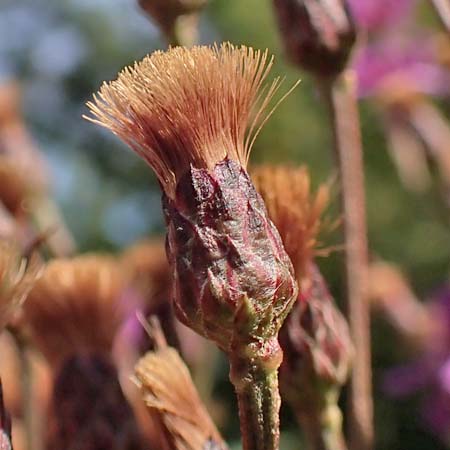
Leaves
The New York ironweed leaves are alternate and 3 to 10 inches long. The leaves are lanceolate (narrow and widest below mid-length) with serrated margins. The leaf surfaces may vary but is usually rough on top and hairy below.
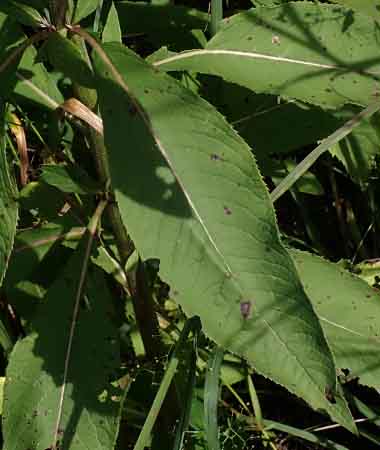
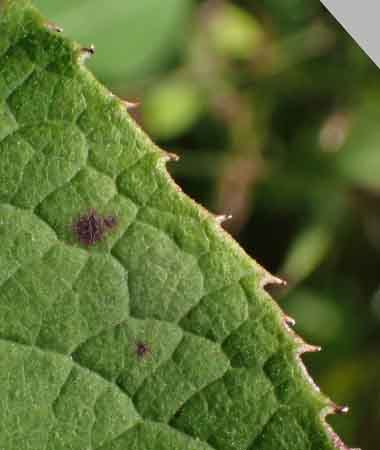
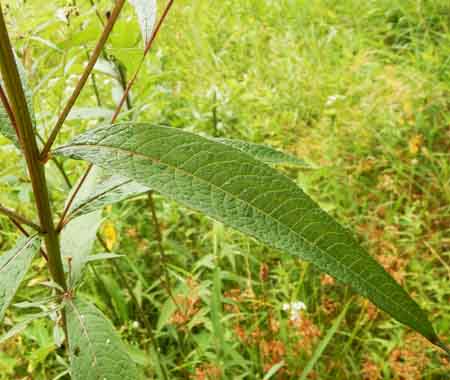
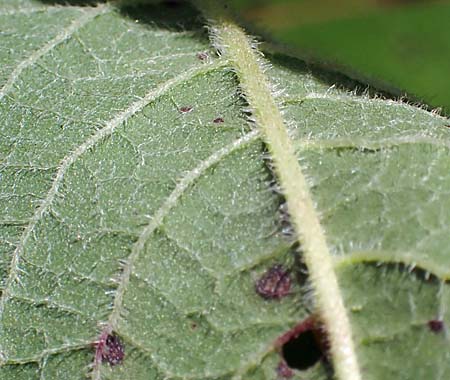
Plant & Habitat
New York ironweed plants are 3 to 8 ft tall. The stems are stout and the surface texture is frequently rough and hairy but varies. It has strong root system so it spreads vegetatively in addition to seeds. It likes sun and moisture. It is found in moist meadows, stream sides and wet woods. In NJ, it blooms July to September. If you have a large yard, it would be a colorful addition. See New Jersey Friendly Yards below for growing conditions.
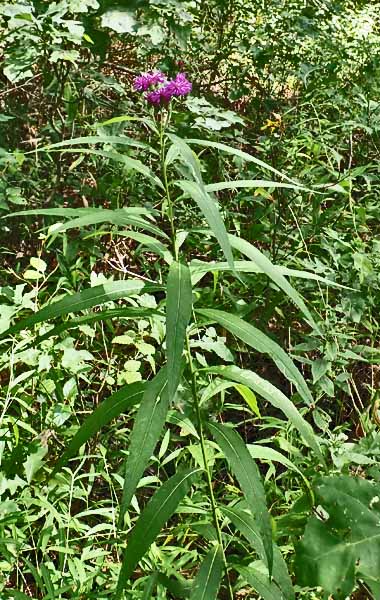
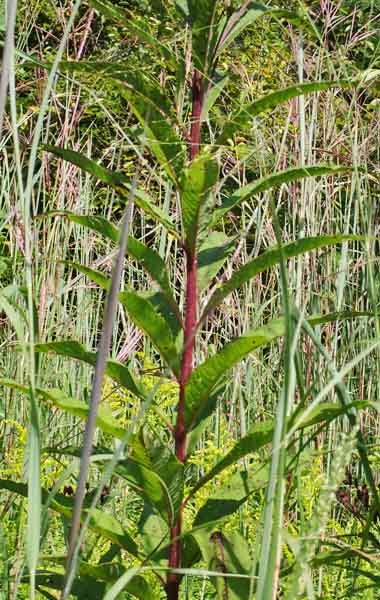
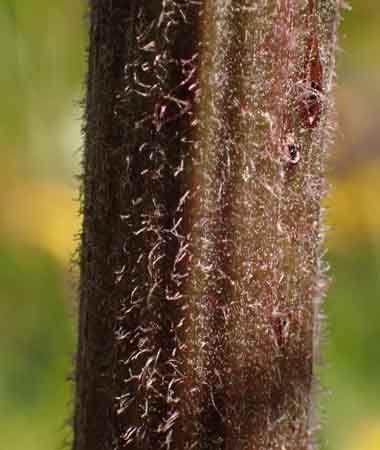
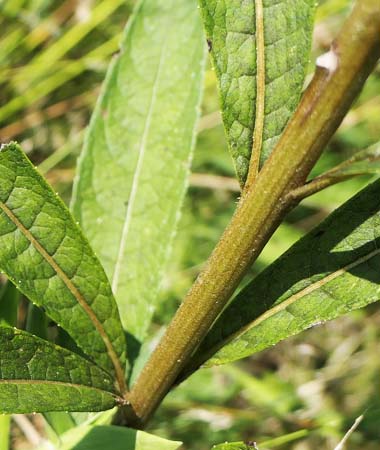
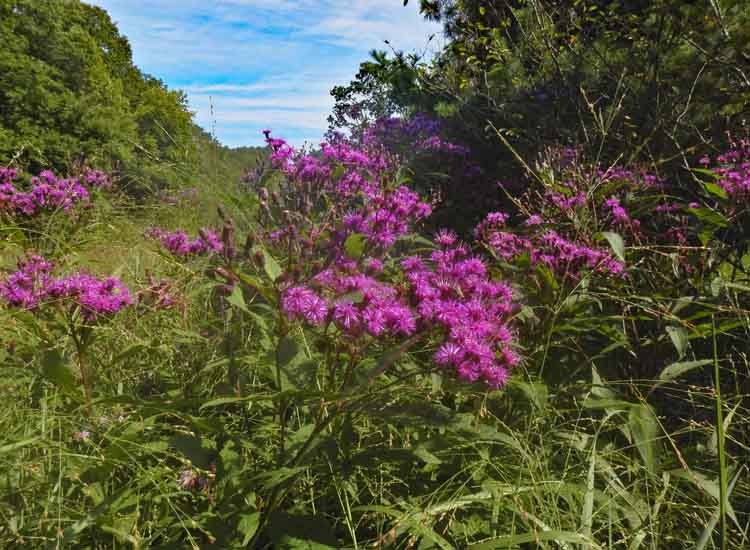
Text by Millie Ling and all photos by Hubert & Millie Ling. Photos: Bridgewater 9/22/2012; River Road Park 9/15/2022, Bedminster; Great Swamp 8/28/2025; High Point State Park 8/22/2023.
Additional information / References
Additional information / references:
- GoBotany: https://gobotany.nativeplanttrust.org/species/vernonia/noveboracensis/
- Virginia Native Plant Society: https://vnps.org/princewilliamwildflowersociety/botanizing-with-marion/new-york-ironweed-vernonia-noveboracensis/
-
In Defense of Plants: An Intriguing Way of Presenting One's Pollen: Composites in general
https://www.indefenseofplants.com/blog/2019/7/17/pollen-presentation-in-the-sunflower-family - Technical paper: Pollen transfer within flowers: How pollen is secondarily presented. https://www.journals.uchicago.edu/doi/epdf/10.1086/727514
- Excellent gardening information: Jersey Friendly Yards https://www.jerseyyards.org/plant/vernonia-noveboracensis/